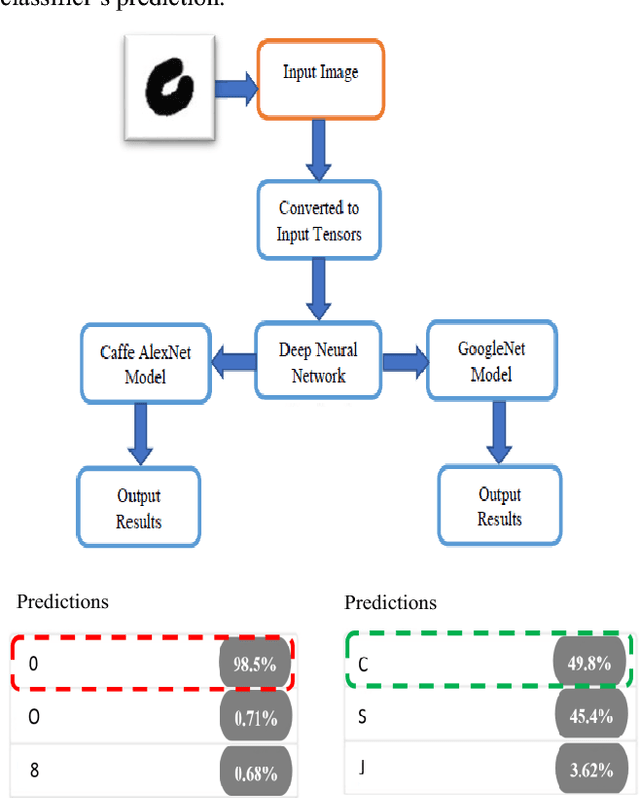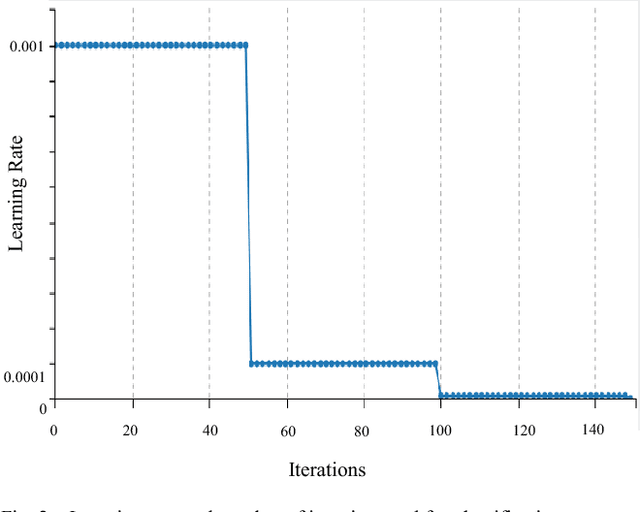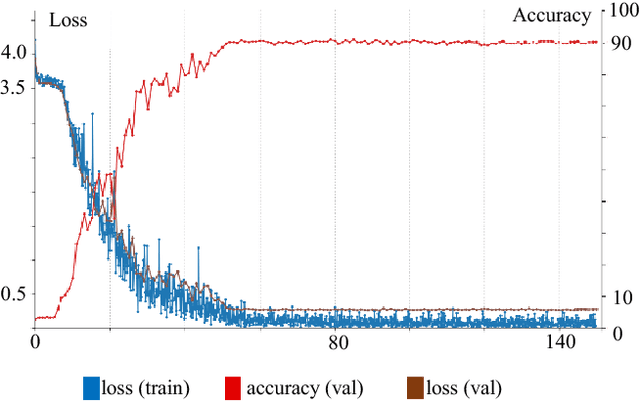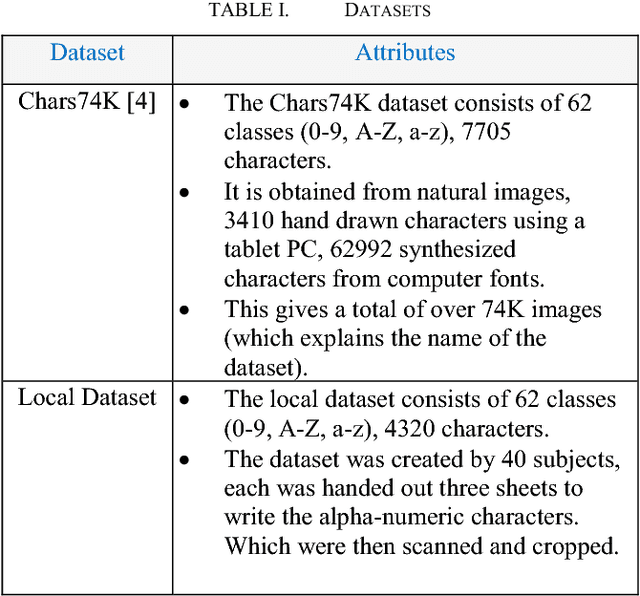Moazam Soomro
Decisive Data using Multi-Modality Optical Sensors for Advanced Vehicular Systems
Jul 25, 2023



Abstract:Optical sensors have played a pivotal role in acquiring real world data for critical applications. This data, when integrated with advanced machine learning algorithms provides meaningful information thus enhancing human vision. This paper focuses on various optical technologies for design and development of state-of-the-art out-cabin forward vision systems and in-cabin driver monitoring systems. The focused optical sensors include Longwave Thermal Imaging (LWIR) cameras, Near Infrared (NIR), Neuromorphic/ event cameras, Visible CMOS cameras and Depth cameras. Further the paper discusses different potential applications which can be employed using the unique strengths of each these optical modalities in real time environment.
Performance Evaluation of Advanced Deep Learning Architectures for Offline Handwritten Character Recognition
Mar 15, 2020



Abstract:This paper presents a hand-written character recognition comparison and performance evaluation for robust and precise classification of different hand-written characters. The system utilizes advanced multilayer deep neural network by collecting features from raw pixel values. The hidden layers stack deep hierarchies of non-linear features since learning complex features from conventional neural networks is very challenging. Two state of the art deep learning architectures were used which includes Caffe AlexNet and GoogleNet models in NVIDIA DIGITS.The frameworks were trained and tested on two different datasets for incorporating diversity and complexity. One of them is the publicly available dataset i.e. Chars74K comprising of 7705 characters and has upper and lowercase English alphabets, along with numerical digits. While the other dataset created locally consists of 4320 characters. The local dataset consists of 62 classes and was created by 40 subjects. It also consists upper and lowercase English alphabets, along with numerical digits. The overall dataset is divided in the ratio of 80% for training and 20% for testing phase. The time required for training phase is approximately 90 minutes. For validation part, the results obtained were compared with the groundtruth. The accuracy level achieved with AlexNet was 77.77% and 88.89% with Google Net. The higher accuracy level of GoogleNet is due to its unique combination of inception modules, each including pooling, convolutions at various scales and concatenation procedures.
 Add to Chrome
Add to Chrome Add to Firefox
Add to Firefox Add to Edge
Add to Edge